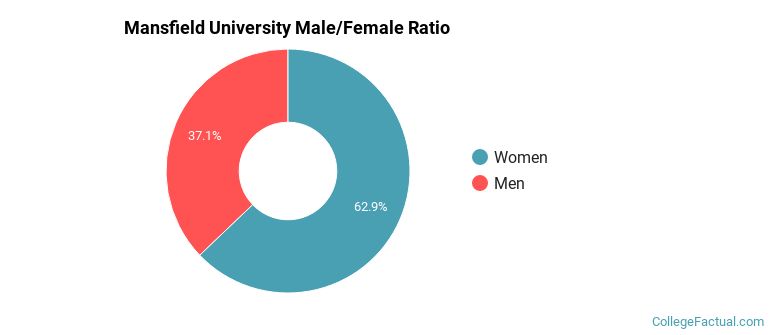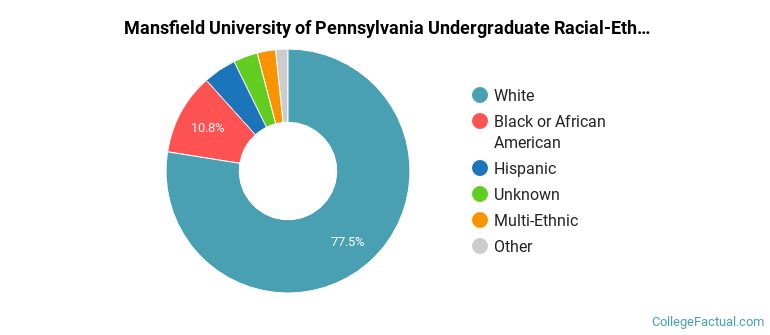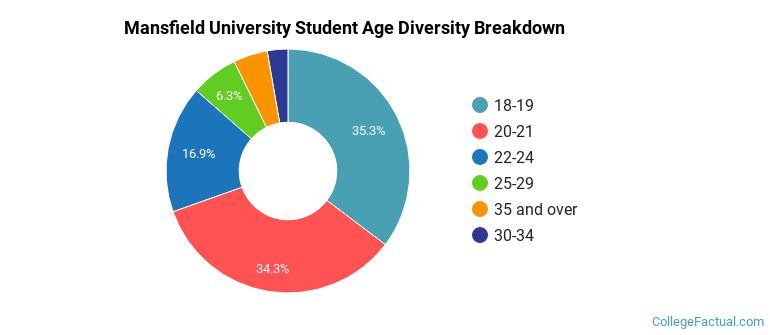 by our College Data Analytics Team
by our College Data Analytics TeamMansfield University total enrollment is approximately 1,784 students.
Male/Female Breakdown of Undergraduates
The full-time Mansfield University undergraduate population is made up of 63% women, and 37% men.

For the gender breakdown for all students, go here.
Mansfield University Racial/Ethnic Breakdown of Undergraduates

| Race/Ethnicity | Number |
|---|---|
| White | 1,143 |
| Black or African American | 176 |
| Hispanic | 67 |
| Multi-Ethnic | 51 |
| Unknown | 33 |
| Asian | 8 |
| International | 8 |
| Native Hawaiian or Pacific Islander | 1 |
See racial/ethnic breakdown for all students.

| Race/Ethnicity | Number |
|---|---|
| White | 1,366 |
| Black or African American | 198 |
| Hispanic | 80 |
| Multi-Ethnic | 59 |
| Unknown | 49 |
| International | 19 |
| Asian | 9 |
| Native Hawaiian or Pacific Islander | 1 |

There are approximately 1,141 female students and 643 male students at Mansfield University.
Mansfield University ranks 1,438 out of 2,183 when it comes to geographic diversity.
20.94% of Mansfield University students come from out of state, and 0.22% come from out of the country.

The undergraduate student body is split among 11 states (may include Washington D.C.). Click on the map for more detail.

| State | Amount |
|---|---|
| Pennsylvania | 355 |
| New York | 68 |
| New Jersey | 12 |
| Maryland | 5 |
| Virginia | 2 |
Students from 6 countries are represented at this school, with the majority of the international students coming from Greece, South Korea, and Kenya.
Learn more about international students at Mansfield University.
A traditional college student is defined as being between the ages of 18-21. At Mansfield University, 67.43% of students fall into that category, compared to the national average of 60%.

| Student Age Group | Amount |
|---|---|
| 18-19 | 644 |
| 20-21 | 625 |
| 22-24 | 308 |
| 25-29 | 114 |
| 35 and over | 83 |
| 30-34 | 50 |
| Under 18 | 0 |
Footnotes
*The racial-ethnic minorities count is calculated by taking the total number of students and subtracting white students, international students, and students whose race/ethnicity was unknown. This number is then divided by the total number of students at the school to obtain the racial-ethnic minorities percentage.
References
Department of Homeland Security Citizenship and Immigration Services
Image Credit: By Johnmaslar under License